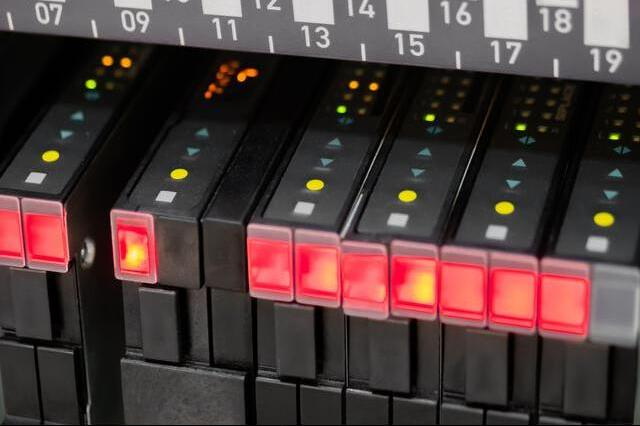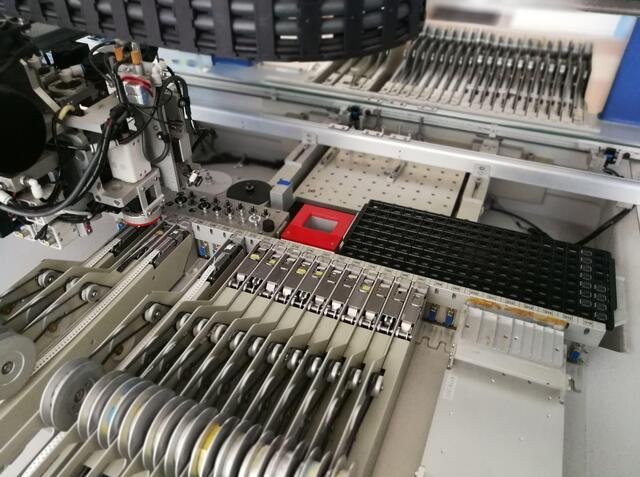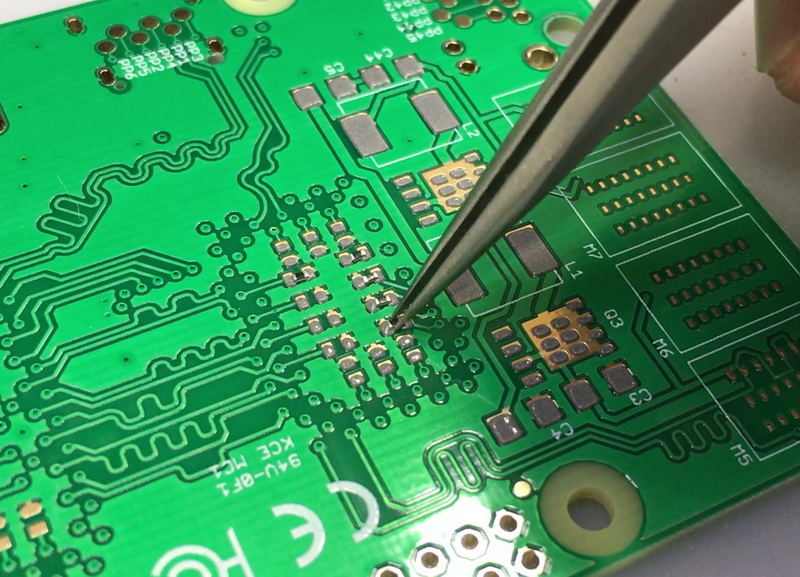Content Menu
● Introduction to Intelligent Pick and Place Machines
>> Key Components of Intelligent Pick and Place Machines
● Adaptation to Different Component Types
>> Benefits of Intelligent Pick and Place Machines
● Future Trends in Intelligent Pick and Place Machines
>> Integration of Machine Learning
>> Real-Time Monitoring
>> Sustainability and Energy Efficiency
● Challenges and Solutions
>> Component Damage Prevention
>> Fiducial Recognition Accuracy
● Case Studies and Applications
>> Consumer Electronics
>> Automotive Industry
>> Aerospace Industry
● Conclusion
● FAQ
>> 1. What are the main components of an intelligent pick and place machine?
>> 2. How do intelligent pick and place machines handle different component sizes?
>> 3. What are the benefits of using intelligent pick and place machines in SMT manufacturing?
>> 4. How do intelligent pick and place machines ensure accurate component placement?
>> 5. What future trends can be expected in intelligent pick and place machines?
Intelligent pick and place machines are pivotal in the surface mount technology (SMT) manufacturing process, enabling the precise and efficient placement of surface mount devices (SMDs) onto printed circuit boards (PCBs). These machines have evolved significantly, incorporating advanced technologies to adapt to various component types, sizes, and orientations. This article explores how intelligent pick and place machines adapt to different component types, highlighting their key features, benefits, and future trends.

Introduction to Intelligent Pick and Place Machines
Intelligent pick and place machines are sophisticated robotic systems designed to automate the assembly of electronic components onto PCBs. They utilize advanced vision systems, precision mechanics, and intelligent software to ensure accurate and efficient component placement. These machines are essential in modern electronics manufacturing, where precision and speed are paramount.
Key Components of Intelligent Pick and Place Machines
1. Feeder System: This system supplies the machine with electronic components. Feeders can be tape and reel feeders for small components or bulk feeders for larger ones.
2. Placement Head: Equipped with multiple nozzles, it picks up components using a vacuum system and places them on the PCB with precision.
3. Vision System: Uses cameras to analyze component positions, orientations, and dimensions, ensuring accurate placement.
4. Control System: Manages the machine's operations, including feeder control and placement head movement.
5. Conveyor System: Transports PCBs through the machine at controlled speeds.
Adaptation to Different Component Types
Intelligent pick and place machines are designed to handle a wide range of SMDs, from small resistors and capacitors (e.g., 0201 metric) to larger components like integrated circuits (ICs) and connectors. Their adaptability is facilitated by:
- Multi-Nozzle Placement Heads: These can be customized to handle different component sizes and shapes, ensuring versatility in production.
- Advanced Vision Systems: These systems enable the machine to recognize and adjust for various component orientations and sizes, ensuring precise placement.
- Smart Feeders: These can automatically manage and track components, optimizing the placement process for different component types.
Benefits of Intelligent Pick and Place Machines
1. Precision and Accuracy: They ensure that components are placed correctly, reducing errors and improving product reliability.
2. Speed and Efficiency: Operating at high speeds, these machines significantly reduce production cycles, making them ideal for high-volume manufacturing.
3. Versatility: They can accommodate a wide variety of component types and sizes without major adjustments.
4. Labor Reduction: By automating the placement process, they reduce labor costs and minimize human errors.
Future Trends in Intelligent Pick and Place Machines
The future of intelligent pick and place machines involves integrating more advanced technologies such as machine learning and real-time monitoring. These enhancements will optimize production processes further, ensuring proactive maintenance and minimizing downtime. Additionally, there is a growing focus on sustainability and energy efficiency in machine design.
Integration of Machine Learning
Machine learning algorithms can be used to predict component placement errors and optimize the production process based on historical data. This predictive maintenance can significantly reduce production downtime and improve overall efficiency.
Real-Time Monitoring
Real-time monitoring systems allow for immediate detection of any issues during production, such as component misalignment or feeder jams. This capability enables quick intervention, reducing the impact on production schedules.
Sustainability and Energy Efficiency
Manufacturers are increasingly focusing on designing machines that consume less energy while maintaining high performance levels. This not only reduces operational costs but also aligns with global sustainability goals.

Challenges and Solutions
Despite their advanced capabilities, intelligent pick and place machines can face challenges such as component damage during placement or inaccurate fiducial recognition. Regular maintenance, proper operation, and high-quality components can mitigate these issues.
Component Damage Prevention
To prevent component damage, machines are equipped with gentle handling mechanisms and precise placement algorithms. Additionally, using high-quality components and ensuring proper storage conditions can reduce the risk of damage.
Fiducial Recognition Accuracy
Improving fiducial recognition accuracy involves using high-resolution vision systems and ensuring that PCBs are properly marked with fiducials. Regular calibration of the vision system also enhances accuracy.
Case Studies and Applications
Intelligent pick and place machines are used across various industries, including consumer electronics, automotive, and aerospace. Their versatility and precision make them indispensable for producing complex electronic devices efficiently.
Consumer Electronics
In consumer electronics, these machines are used to assemble components for smartphones, laptops, and televisions. Their speed and accuracy ensure that products meet high quality standards while being produced quickly.
Automotive Industry
In the automotive sector, intelligent pick and place machines are crucial for manufacturing electronic control units (ECUs) and other automotive electronics. They ensure reliability and precision, which are critical for safety and performance.
Aerospace Industry
In aerospace, where reliability is paramount, these machines are used to assemble components for aircraft and satellite systems. Their precision ensures that electronic components meet stringent quality standards.
Conclusion
Intelligent pick and place machines are indispensable in modern SMT manufacturing, offering precision, speed, and versatility. Their ability to adapt to different component types makes them crucial for producing complex electronic devices efficiently. As technology continues to evolve, these machines will play an increasingly important role in optimizing production processes and meeting the demands of a rapidly changing electronics industry.

FAQ
1. What are the main components of an intelligent pick and place machine?
- The main components include the feeder system, placement head, vision system, control system, and conveyor system.
2. How do intelligent pick and place machines handle different component sizes?
- They use multi-nozzle placement heads and advanced vision systems to adapt to various component sizes and shapes.
3. What are the benefits of using intelligent pick and place machines in SMT manufacturing?
- Benefits include precision, speed, versatility, and labor reduction, which enhance overall production efficiency and product quality.
4. How do intelligent pick and place machines ensure accurate component placement?
- They use vision systems to analyze component positions and orientations, ensuring precise alignment with PCB solder pads.
5. What future trends can be expected in intelligent pick and place machines?
- Future trends include the integration of machine learning and real-time monitoring to optimize production processes and reduce downtime.




















